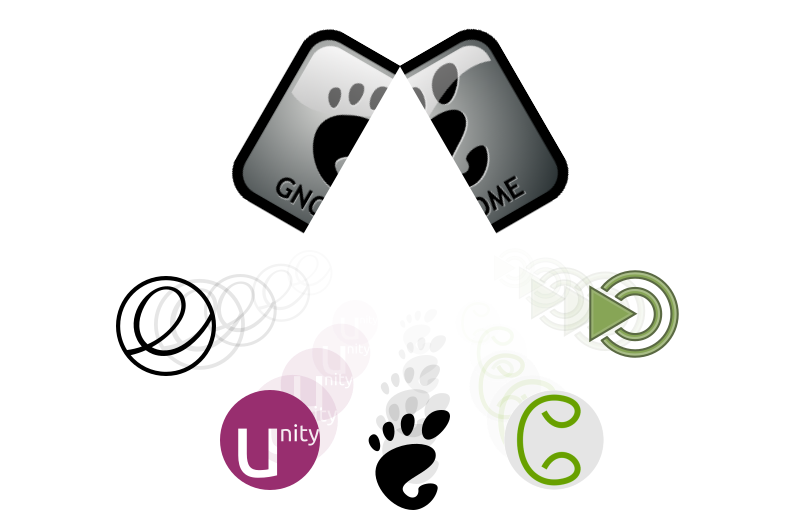The phrase “The Year of the Linux Desktop” is one we see being used by hopefuls, to describe a future in which desktop Linux has reached the masses.
But I’m more pragmatic, and would like to describe the past and tweak this phrase to (I believe) accurately surmise 2011 as “The Year of the Linux Desktop Schism”.

So let me tell you a little story of about this schism.
A Long Time Ago in 2011
The Linux desktop user base was happily enjoying the status quo. We had (arguably) two major desktops: GNOME and KDE , with a few smaller, less popular or used desktops as well (mostly named with initialisms).
It was the heyday of GNOME 2 on the desktop, being the default desktop used in many of the major distributions. But bubbling out of the ether of the GNOME Project was this idea for a new shell and a overhaul of GNOME, so GNOME 2 was brought to a close and GNOME Shell was born as the future of GNOME.
The Age of Dissent, Madness & Innovation
GNOME 3 and its new Shell did not sit well with everyone and many in the great blogosphere saw it as disastrous for GNOME and for users.
Much criticism was spouted and controversy raised and many started searching for alternatives. But there were those who stood by their faithful project and seeing the new version for what it was: a new beginning for GNOME and they knew that beginnings are not perfect.
Nevertheless, with this massive split in the desktop market we saw much change. There came a rapid flurry of several new projects and a moonshot from one for human beings.
The Ubuntu upgraded their fledging “netbook interface” and promoted it to the desktop, calling it Unity and it was took off down a path to unite the desktop with other emerging platforms yet to come.
There was also much dissatisfaction with the abandonment of GNOME 2, and the community they decided to lower their figurative pitchforks and use them to do some literal forking. They took up the remenants of this legacy desktop and used it to forge a new project. This project was to be named MATE and was to continue in the original spirit of GNOME 2.
The Linux Mint team, unsure of their future with GNOME under the Shell created the “Mint GNOME Shell Linux Mint Extension Pack of Extensions for GNOME Shell”. This addon to the new GNOME experience would eventually lead to the creation Cinnamon, which itself was a fork of GNOME 3.
Despite being a relatively new arrival, the ambitious elementary and its team was developing the Pantheon desktop in relative secrecy for use in future versions of their OS, having previously relied on a slimmed-down GNOME 2. They were to become one of the most polished of them all.
And they all live happily ever since.
The end.
The Moral of the Story
All of these projects have been thriving in these 3 years hence, and why? Because of their communities.
All that has occurred is what the Linux community is and it is exemplary of the freedom that it and the whole of open source represents. We have the freedom in open source to exact our own change or act upon what may not agree with. We are not confined to a set of strictures, we are able to do what we feel is right and find other people who do as well.
To deride and belittle others for acting in their freedom or because they may not agree with you is just wrong and not keeping with the ethos of our community.